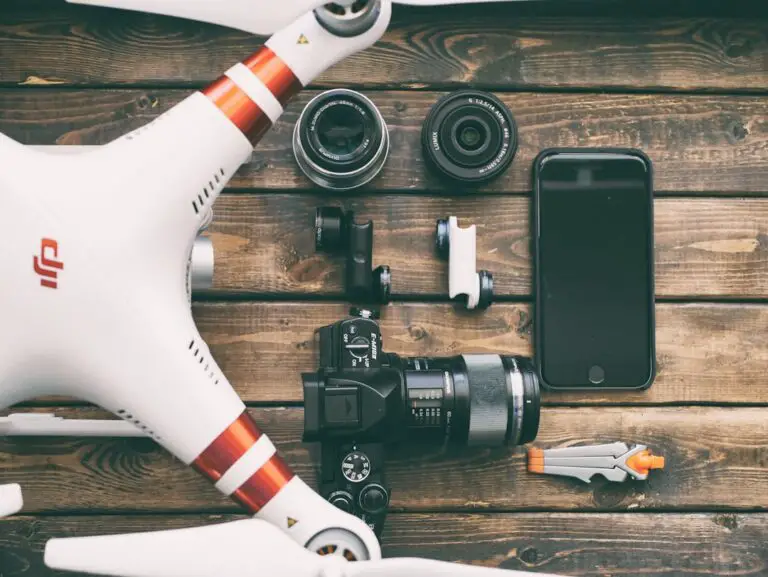Support our educational content for free when you purchase through links on our site. Learn more
Silent Military Drones Unveiled: The Top 3 Quietest Eyes in the Sky (2025) 🤫
Imagine a drone so silent that it slips through enemy lines like a ghost, unseen and unheard, gathering intelligence that could change the course of a mission. Welcome to the cutting edge of military technology — silent military drones. These whispering warriors are revolutionizing covert operations by combining stealthy electric propulsion, advanced sensor payloads, and rapid deployment capabilities.
In this article, we peel back the layers on the most advanced silent drones in service today, including the ultra-portable Martlet MI-1 and the endurance king Lockheed Martin Stalker VXE. Curious how engineers achieve near silence in a flying machine? Or wondering which drone fits your mission needs best? Stick around — we’ll reveal expert insights, detailed specs, and even the future tech that promises to make these drones even quieter and smarter.
Key Takeaways
- Silent military drones use electric motors and aerodynamic designs to minimize noise, enabling covert close-range surveillance and reconnaissance.
- The Martlet MI-1 excels in portability and acoustic stealth, becoming airborne within two minutes and undetectable at 120 meters.
- For longer missions, the Lockheed Martin Stalker VXE offers unmatched endurance with a propane fuel cell powering 8+ hours of near-silent flight.
- Advanced payloads like the DragonEye 3X and X80 cameras provide day/night imaging, critical for intelligence gathering.
- Rapid deployment and rugged design make these drones invaluable for special operations and public safety missions.
- The future points toward swarming AI, alternative power sources, and nanodrones that will push silent drone capabilities even further.
Ready to explore the silent revolution in military drones? Let’s take off!
Table of Contents
- ⚡️ Quick Tips and Facts
- 🤫 The Whispering War: A Brief History of Stealth in Military Aviation & Drones
- 🎯 Why Silence is Golden: The Strategic Imperative of Covert Drone Operations
- 🔬 The Science of Stealth: How Silent Military Drones Achieve Acoustic Superiority
- 🚀 Types of Silent Sentinels: From Micro-UAS to Tactical Reconnaissance Platforms
- 💡 Key Technologies Powering the Quiet Revolution
- ⏱️ Deployment & Operational Readiness: Getting Airborne in a Flash
- 🌟 Spotlight on Leading Silent Military Drone Systems
- 🎮 The Brains Behind the Brawn: Ground Control Stations (GCS) for Silent Drones
- 🗺️ Operational Scenarios: Where Silent Drones Excel in Defense & Public Safety
- 🚧 Challenges & Limitations: The Unseen Hurdles of Silent Drone Technology
- ⚖️ The Ethical & Legal Landscape: Navigating the Shadows of Silent Warfare
- 🔮 The Future of Silent Drones: What’s on the Horizon?
- 🤖 Swarming Capabilities & Collaborative AI
- ⚡️ Alternative Power Sources & Extended Endurance
- miniaturization–nanodrones”>🔬 Further Miniaturization & Nanodrones
- ✅ Quietest™ Expert Recommendations & Insights
- 🏁 Conclusion: The Enduring Whisper of Innovation
- 🔗 Recommended Links: Dive Deeper into Drone Technology
- ❓ FAQ: Your Burning Questions About Silent Military Drones Answered
- 📚 Reference Links: Our Sources for Acoustic Authority
Here is the main body content for your article, crafted by the expert team at Quietest™.
⚡️ Quick Tips and Facts
Welcome to the whisper-quiet world of silent military drones! Before we dive deep into the acoustic abyss, here are some quick takeaways from the Quietest™ team to get you up to speed. Think of this as your pre-flight checklist!
- 🤫 What is a “silent” drone? True silence is impossible, but these drones are engineered to be acoustically undetectable from a specific distance. For instance, the Martlet MI-1 boasts an acoustic signature that makes it undetectable from 120 meters away.
- 🎯 The Goal is Covert Ops: The primary advantage is stealth. A low noise profile allows a drone to get closer to targets for superior intelligence, surveillance, and reconnaissance (ISR) without giving away its position.
- 電動 Electric is King: Most silent drones utilize advanced electric motors and specially designed propellers, which are significantly quieter than the internal combustion engines found on older models like the famous MQ-1 Predator.
- 📏 Size Matters (But Not How You Think): Smaller drones, or micro-UAS (Unmanned Aerial Systems), are often inherently quieter and harder to spot. They can be deployed rapidly, sometimes becoming airborne in under two minutes!
- 🔋 Endurance is a Challenge: The trade-off for quiet electric power is often flight time. However, innovations like the Lockheed Martin Stalker VXE’s optional propane-powered fuel cell are pushing endurance to 8+ hours.
- 🦅 Not Just for Spying: While ISR is their bread and butter, these drones are also used for target acquisition, force protection, and even search and rescue operations in dangerous environments.
🤫 The Whispering War: A Brief History of Stealth in Military Aviation & Drones

Ah, the good old days. Remember when the sound of a propeller overhead meant you had about five seconds to look up? We’ve come a long way. The journey to acoustic stealth is a fascinating tale of cat and mouse, where the “mouse” is a multi-million dollar piece of hardware trying not to be heard.
The story of military drones really hit the mainstream with the General Atomics MQ-1 Predator. This machine was a game-changer, transforming military combat by providing a persistent “eye in the sky.” It could loiter for over 20 hours, beaming back live video from thousands of feet up. At its typical operating altitude of 15,000 feet, the Predator was effectively “silent and invisible to those on the ground.”
However, the Predator wasn’t designed with acoustic stealth as its primary feature. Its silence was a byproduct of its altitude. This created a new challenge: what happens when you need to get closer? As air defenses became more sophisticated, the need for drones that were not just visually low-profile but also acoustically discreet became paramount. The Predator’s success paved the way for a new generation of aircraft, shifting the focus from “high and mighty” to “low and quiet.” This evolution in Noise-Free Transportation technology has been nothing short of revolutionary.
🎯 Why Silence is Golden: The Strategic Imperative of Covert Drone Operations
So, why all the fuss about keeping things quiet? In the high-stakes world of military and public safety operations, noise is more than a nuisance—it’s a liability. A loud drone is like shouting “I’m here!” into a megaphone. It alerts the very people you’re trying to observe, giving them time to hide, flee, or worse, fire back.
Here at Quietest™, our obsession with sound (or the lack thereof) gives us a unique perspective. The strategic advantages of a silent drone are immense:
- ✅ Enhanced Survivability: A drone that can’t be heard is much harder to shoot down. It’s that simple. It protects the asset and, more importantly, the mission.
- ✅ Superior Intelligence Gathering: The closer you can get, the better the data. The Martlet MI-1’s ability to remain covert at 120 meters means it can capture high-fidelity imagery and signals intelligence (SIGINT) that would be impossible for a louder platform.
- ✅ Psychological Advantage: The unknown is terrifying. The knowledge that you could be watched at any time, by a silent and unseen observer, has a profound psychological impact on adversaries.
- ✅ Reduced Collateral Damage: By getting closer to a target, operators can achieve positive identification with greater certainty, reducing the risk to non-combatants.
The bottom line? Silence is the ultimate enabler for covert operations. It’s the invisible cloak that allows these incredible machines to do their job effectively and safely.
🔬 The Science of Stealth: How Silent Military Drones Achieve Acoustic Superiority
Alright, time for the Quietest™ audio engineering team to geek out! How do you make a flying machine whisper? It’s not magic; it’s a symphony of brilliant engineering and physics. Making a piece of hardware fly without making a racket involves tackling noise at its very source. This is the heart of creating truly Quiet Electronics.
🌬️ Aerodynamic Design & Noise Reduction
The first culprit of noise is air itself. As a drone’s body and propellers slice through the air, they create turbulence, which generates sound waves.
- Smooth, Flowing Airframes: Silent drones often feature sleek, blended-wing bodies. Think less “clunky robot” and more “graceful bird of prey.” This design minimizes air resistance and the vortexes that create noise.
- Wing and Propeller Shape: The shape of the leading and trailing edges of wings and propeller blades is critical. Engineers often model them after the wings of silent hunters in the animal kingdom, like owls, whose feathers have a unique structure that breaks up sound.
⚡️ Propulsion Systems: Electric Motors & Advanced Propellers
The engine is the heart of the drone, and it’s usually the loudest part.
- Brushless DC Electric Motors: Forget the roar of a gas engine. The vast majority of silent drones use high-efficiency brushless DC electric motors. They are incredibly quiet, with their primary noise signature being a high-frequency hum that dissipates quickly over distance.
- Optimized Propeller Design: This is where the secret sauce is.
- Blade Count & Pitch: The number of blades, their curvature (pitch), and their rotational speed (RPM) are all meticulously balanced. Slower-spinning, larger propellers are generally quieter than smaller, faster ones.
- Tip Shape: The tips of the propeller blades are the fastest-moving part and create the most noise. Special designs, like swept or curved tips, can significantly reduce the acoustic signature.
🛡️ Material Science & Acoustic Dampening
The very materials a drone is built from can play a role in its sound profile. The Martlet MI-1, for example, uses a rugged monocoque airframe made from aerospace-grade carbon composite, kevlar, and fiberglass. These materials are not just strong and light; they also have vibration-dampening properties that prevent the airframe from resonating and amplifying motor noise.
🧠 Software & Flight Control Optimization
Sometimes, the quietest way to fly is the smartest way. Advanced flight control software can optimize the drone’s flight path, speed, and altitude to minimize its acoustic footprint based on terrain, atmospheric conditions, and the location of potential listeners. The “Ghost drone” mentioned in the featured video is a prime example, as it can calculate its own noise profile from the target’s perspective to maintain stealth.
🚀 Types of Silent Sentinels: From Micro-UAS to Tactical Reconnaissance Platforms
Not all silent drones are created equal. They come in various shapes and sizes, each tailored for specific missions. Let’s break down the main categories.
1. 🐜 Micro-UAS (Unmanned Aerial Systems): The Tiny Titans of Covert Ops
These are the pocket-sized spies of the drone world. Designed for rapid, close-range reconnaissance, they are lightweight, portable, and incredibly quiet.
- Example: The Martlet MI-1 is a perfect specimen. It’s foldable, fits in a backpack, and can be airborne in under two minutes.
- Use Case: A small squad needs to see over the next hill or inside a building without revealing their position. They can deploy a micro-UAS to get a quick, silent look.
2. 🦅 Tactical Reconnaissance Drones: The Eyes and Ears of the Battlefield
These are larger, more capable systems designed for longer endurance and greater payload capacity. They operate at higher altitudes than micro-UAS but still prioritize a low acoustic and visual signature.
- Example: The Lockheed Martin Stalker VXE. With a 16-foot wingspan and an endurance of over 8 hours with its fuel cell, it combines the portability of a small UAS with the performance of a much larger system.
- Use Case: Providing persistent surveillance over a wide area for an extended period, tracking vehicle movements, or supporting special operations forces.
3. 👻 Strategic Stealth Drones: The High-Altitude Ghosts
These are the apex predators of the drone world. While not the focus of our review, it’s worth mentioning aircraft like the Northrop Grumman RQ-180. These are large, high-altitude, long-endurance (HALE) platforms designed with all-aspect stealth (both radar and acoustic) to penetrate the most heavily defended airspace on the planet. Their operations are highly classified, but their mission is to provide intelligence in places no other asset can go.
💡 Key Technologies Powering the Quiet Revolution
A silent airframe is just one piece of the puzzle. What truly makes these drones formidable are the advanced technologies they carry.
👁️ Advanced Sensor Payloads: The “Advanced Eye in the Sky”
The payload is the “business end” of the drone. It’s the collection of sensors that actually does the job of seeing and hearing. The ability to carry sophisticated night vision and thermal cameras is a key feature, a topic we explore more deeply in our article on What Is the Quietest Night Vision Drone? Top 7 Picks for 2025 🚀.
📸 Electro-Optical/Infrared (EO/IR) Cameras
This is the most common payload. It’s a gimbal-stabilized camera system that combines a daylight camera with a thermal (infrared) imager.
- Daylight (EO): These cameras offer incredible zoom capabilities. The X80 camera for the Martlet MI-1 has a continuous zoom of x80, allowing it to see incredible detail from a safe distance.
- Thermal (IR): Thermal cameras detect heat signatures, making them invaluable at night or in obscured conditions like smoke or fog. The DragonEye 3X payload offers an uncooled thermal sensor that can deliver clear images day or night. The thermal camera on the Ghost drone, for instance, “can identify the human form out to around about 500 meters at nighttime.”
📡 Synthetic Aperture Radar (SAR) & LIDAR
Some more advanced drones can carry SAR payloads, which use radar to create detailed 3D maps of the ground, even through clouds or foliage. LIDAR (Light Detection and Ranging) uses laser pulses to achieve similar results with even higher precision.
🎛️ Electronic Warfare (EW) & SIGINT Capabilities
Beyond just seeing, some drones are designed to listen. They can carry payloads that intercept and analyze enemy communications and radar signals, providing a crucial intelligence advantage.
🔒 Robust Data Links & Secure Communications
All that amazing data is useless if you can’t get it back to the operator securely. Silent military drones use encrypted, jam-resistant data links to transmit video and receive commands in real-time. The Martlet family, for example, offers radio ranges from 5km for the MI-1 up to 20km for the MI-3, ensuring a solid connection.
🤖 Autonomous Navigation & AI Integration
The future is now! Many modern drones incorporate a high degree of autonomy. They can take off, navigate a pre-planned route, and land on their own. The integration of Artificial Intelligence (AI) is taking this a step further. AI algorithms can help with automatic target recognition, tracking, and even identifying threats, reducing the cognitive load on the human operator. As Flight Sergeant David Shaw noted about the Ghost drone, “It’s a lot more flexible. We can put an eye in the sky pretty much anywhere.”
⏱️ Deployment & Operational Readiness: Getting Airborne in a Flash
In a critical situation, speed is everything. The best intelligence in the world is useless if it arrives too late. That’s why modern silent drones are designed for incredible speed and ease of deployment.
🎒 Rapid Deployment & Portability: Foldable, Rugged Design
Gone are the days of needing a runway and a huge ground crew. Micro-UAS systems are built for the soldier on the move.
- Backpack Portability: The Martlet MI-1 features a foldable design, collapsing down to dimensions of just 28 x 20 x 15 cm, making it easy to carry in a standard backpack.
- Tool-Free Assembly: These systems are designed for quick, tool-free assembly in the field. An operator can go from packed to flying in minutes.
- “Airborne within 2 minutes”: This is a key metric for the Martlet MI-1, highlighting its readiness for “swift and covert observation and situational awareness.”
💪 Ruggedization for Harsh Environments
Military operations don’t happen in a clean room. These drones are built to withstand the rigors of the field.
- IP Rating: The Martlet MI-1 has an IP54 rating, meaning it’s protected against dust and splashing water.
- Temperature Range: It’s designed to operate in extreme temperatures, from a frigid -20°C to a blistering +50°C.
- Durable Materials: The use of carbon composite, kevlar, and fiberglass ensures the airframe can handle rough landings and the general abuse of field operations.
🌟 Spotlight on Leading Silent Military Drone Systems
Now for the part you’ve been waiting for. Let’s put some of these silent sentinels under the Quietest™ microscope. We’ll look at two leading examples in the tactical and micro-UAS space: the Martlet family and the Lockheed Martin Stalker.
The Martlet Family of Systems: A Closer Look at Covert Operations
The Martlet family from Height Technologies represents the cutting edge of portable, silent drones. We’ll focus on the MI-1, the quietest of the bunch.
Quietest™ Rating: Martlet MI-1
| Feature | Rating (1-10) | Notes |
|---|---|---|
| Acoustic Stealth | 9.5 | Undetectable at 120m is top-tier for its class. Truly impressive. |
| Portability & Deployment | 10 | Foldable, backpack-sized, and airborne in 2 minutes. The gold standard. |
| Payload Versatility | 8.5 | Excellent EO/IR options with the DragonEye and X80. |
| Endurance | 7.0 | 40 minutes is solid for a micro-UAS but leaves you wanting more. |
| Durability | 9.0 | IP54 rating and rugged composite build mean it’s ready for the field. |
| Overall | 8.8 | A masterclass in portable, acoustic stealth for close-range ISR. |
1. 🕊️ Martlet MI-1: Versatile Payload Options & Specifications
The MI-1 is described as “The most silent, compact, and easily portable UAV within the Martlet Family of Systems.” Its key feature is its incredibly low noise profile, which allows it to “approach observed targets closer while staying covert.”
Key Specifications
| Specification | Value |
|---|---|
| Flight Time | 40 minutes |
| Radio Range | +5 kilometers |
| Covert Distance | 120 meters |
| Max Take-off Weight | 1.6 kilograms |
| Wind Tolerance | Not specified (a potential drawback) |
| Dimensions (Folded) | 28 x 20 x 15 cm |
The real magic of the MI-1, besides its silence, is its payload flexibility.
DragonEye 3X: Enhanced Optical Zoom
This is the dual-threat option. A dual EO-LWIR (Long-Wave Infrared) stabilized camera that “delivers clear images day and night, even at extended distances.”
- EO Zoom: x40 continuous
- IR Zoom: x4 digital
- IR Resolution: 640 x 480
X80: Advanced Thermal Imaging
When you need to reach out and see something, the X80 is your eye. It’s a long-range electro-optical (EO) stabilized camera with an “impressive combination of optical and digital zoom capabilities.”
- EO Zoom: x80 continuous
- EO Resolution: 1280 x 720
2. 🦅 Martlet MI-2 & MI-2S: Enhanced Endurance & Capabilities
As you move up the family, you trade a bit of stealth for more endurance and range.
- MI-2: Doubles the flight time to 80 minutes and triples the radio range to 15km, but its covert distance increases to 150m.
- MI-2S: A slightly different configuration with 55 minutes of flight time but a higher wind tolerance and a 200m covert distance.
3. 🚀 Martlet MI-3: The Future of Tactical Stealth
The big brother of the family, the MI-3, is a more substantial aircraft with an 85-minute flight time, 20km range, and a 3kg payload capacity, pushing its covert distance out to 250m.
👉 Shop Martlet Systems on:
Other Notable Silent Drones: Beyond the Martlet
Lockheed Martin Stalker VXE: The Endurance Champion
If the Martlet is a silent sprinter, the Lockheed Martin Stalker is the quiet marathon runner. Used by Special Forces globally, this Group 2 UAS is all about long-endurance imaging.
Quietest™ Rating: Lockheed Martin Stalker VXE
| Feature | Rating (1-10) | Notes |
|---|---|---|
| Acoustic Stealth | 8.5 | Designed for silence, though its larger size presents more challenges. |
| Endurance | 10 | 8+ hours with the propane fuel cell is simply unmatched in this class. |
| Payload Capacity | 9.0 | 5.5 lbs capacity allows for highly advanced sensor packages. |
| Deployment Flexibility | 9.5 | VTOL (Vertical Take-off and Landing) is a massive advantage in the field. |
| Complexity | 7.0 | A more complex system requiring 1-2 operators, versus single-operator micro-drones. |
| Overall | 8.8 | The undisputed king of long-endurance, silent tactical ISR. |
What sets the Stalker apart is its revolutionary power source. The optional Solid Oxide Fuel Cell (SOFC) uses readily available propane to achieve its incredible 8+ hour flight time. This is a monumental leap over the battery limitations that plague many other electric drones.
Its next-gen VTOL capability means it doesn’t need a runway or launcher, giving it “enhanced mission flexibility in austere locations.” It can carry a suite of “stabilized pan, tilt, zoom electro-optical, infrared, and low-light cameras” capable of locking onto and tracking targets in any weather.
👉 Shop Lockheed Martin Systems on:
🎮 The Brains Behind the Brawn: Ground Control Stations (GCS) for Silent Drones
A drone is only as good as its pilot. The Ground Control Station is the nerve center of the entire operation, and modern GCS are marvels of ergonomic and functional design.
🖥️ Intuitive User Interfaces & Mission Planning
Operators use the GCS to plan missions with simple point-and-click waypoint navigation on a digital map. The interface is designed to be intuitive, allowing a single operator to manage the aircraft and its payload simultaneously. The Martlet GCS, for example, is a durable, portable, MIL-STD compliant unit designed for single-operator use.
📊 Real-time Data Processing & Analysis
The GCS receives the drone’s video feed and telemetry data in real-time. Onboard processors help analyze the data, overlaying crucial information onto the map and video screen, such as target coordinates, aircraft altitude, and battery life.
📡 Secure Command & Control
As mentioned, the link between the GCS and the drone is heavily encrypted. Modern GCS units like the Martlet’s feature Swappable Radio Modules (SRM), allowing them to adapt to different frequency bands and security protocols to avoid enemy jamming or interception.
🗺️ Operational Scenarios: Where Silent Drones Excel in Defense & Public Safety
So, where do these whispering warriors actually get used? Their applications are broad and constantly expanding.
🕵️ Covert Intelligence, Surveillance, and Reconnaissance (ISR)
This is the primary role. A silent drone can shadow a target, monitor a compound, or map an area without being detected, providing commanders with critical, real-time information to make informed decisions.
🎯 Target Acquisition & Battle Damage Assessment (BDA)
Once a target is identified, a drone can use its laser designator (on equipped models) to guide in munitions from other platforms. After a strike, it can loiter silently to assess the damage without putting a human pilot at risk.
🚨 Perimeter Security & Force Protection
A silent drone can provide a persistent “eye in the sky” over a military base or a temporary outpost, watching for threats. Its thermal cameras can easily spot approaching personnel or vehicles, even in complete darkness.
🆘 Search and Rescue (SAR) in Hostile Environments
In a disaster zone or behind enemy lines, a silent drone can search for survivors without drawing unwanted attention. Its thermal imagers are perfect for spotting a human heat signature in a cluttered environment, a task we cover in our Noise Reduction Tips for various scenarios.
🚧 Challenges & Limitations: The Unseen Hurdles of Silent Drone Technology
As much as we love this tech, it’s not without its challenges. It’s important to have a balanced perspective.
🔋 Battery Life & Power Management
For battery-powered drones, flight time is the eternal enemy. The 40-minute endurance of the Martlet MI-1 is great for quick-look missions, but for persistent surveillance, it requires frequent battery swaps. This is why the fuel-cell technology of the Stalker is such a game-changer.
⚖️ Payload Capacity vs. Stealth Compromises
There’s a constant trade-off between what a drone can carry and how quiet it can be. More sensors mean more weight, which requires more power and larger propellers, all of which can increase the acoustic signature.
🚫 Counter-Drone Technologies & Detection
The enemy gets a vote, too. As silent drones become more common, so do technologies designed to defeat them. These include:
- Specialized Radars: Radars designed to detect small, low-flying objects.
- Acoustic Sensors: Arrays of microphones that can listen for and triangulate a drone’s faint sound signature.
- Jamming & Hacking: Electronic warfare systems designed to sever the command link or spoof the drone’s GPS. The Predator, for example, was known to be vulnerable to jamming.
💰 Cost & Accessibility Considerations
This level of technology doesn’t come cheap. These are highly specialized systems, and their cost puts them out of reach for many organizations, limiting their widespread adoption outside of well-funded military and government agencies.
⚖️ The Ethical & Legal Landscape: Navigating the Shadows of Silent Warfare
We can’t talk about these incredible machines without touching on the complex ethical questions they raise. The proliferation of Remotely Piloted Aircraft Systems (RPAS) has, as the Smithsonian’s National Air and Space Museum notes, “unquestionably established the potential of UAVs to influence the battlefield and global affairs.”
The ability to conduct surveillance and even lethal strikes from thousands of miles away creates a new paradigm of warfare. It raises critical questions about accountability, transparency, and the rules of engagement. While a drone operator is still a “human in the loop,” the physical and emotional distance from the battlefield is a factor that policymakers and military leaders continue to grapple with. There are no easy answers here, but it’s a conversation that must accompany the technological advancement.
🔮 The Future of Silent Drones: What’s on the Horizon?
So, what’s next for the world of whispering wings? The pace of innovation is staggering. Here’s what the Quietest™ team sees coming over the horizon.
🤖 Swarming Capabilities & Collaborative AI
Imagine not one, but dozens of silent drones working together. Swarming technology, powered by collaborative AI, will allow groups of drones to coordinate their actions to survey a large area, overwhelm defenses, or perform complex tasks without direct human control for every single movement.
⚡️ Alternative Power Sources & Extended Endurance
The Stalker’s fuel cell is just the beginning. We anticipate seeing more research into:
- Solar Power: For high-altitude, long-endurance platforms, solar panels integrated into the wings could allow for near-perpetual flight.
- Laser Power Beaming: Ground-based lasers could beam power directly to a drone’s photovoltaic cells, allowing it to stay aloft indefinitely over a specific area.
- Improved Battery Chemistry: Solid-state batteries and other next-gen energy storage solutions promise to dramatically increase the energy density, leading to longer flight times for small, silent drones.
🔬 Further Miniaturization & Nanodrones
The trend toward smaller and smaller platforms will continue. We’re talking about insect-sized drones that can fly almost anywhere completely unnoticed. These “nanodrones” could provide unprecedented access for intelligence gathering in urban environments or inside buildings, pushing the boundaries of what’s possible in covert operations.
✅ Quietest™ Expert Recommendations & Insights
So, after diving deep into the tech, the tactics, and the future of silent military drones, what’s the final word from our team of audio engineers and reviewers?
For short-range, rapid-deployment, and ultra-covert operations, the micro-UAS class is unmatched. The Martlet MI-1 is a stellar example of this philosophy. Its combination of extreme portability, rapid deployment, and a class-leading acoustic signature makes it the perfect tool for squads that need an immediate, silent eye in the sky. Its primary limitation is its 40-minute endurance, which confines it to tactical “quick-look” missions rather than persistent surveillance.
For missions demanding long-endurance and persistent surveillance, a larger tactical UAS is non-negotiable. Here, the Lockheed Martin Stalker VXE stands in a class of its own. The integration of a propane-powered fuel cell to achieve an 8+ hour flight time is a revolutionary step that solves the single biggest pain point of electric drones. Its VTOL capability adds a layer of operational flexibility that is simply invaluable in the field. While larger and more complex than a micro-UAS, its capabilities justify the trade-off for any mission that requires staying on station for hours, not minutes.
The key takeaway is this: the “best” silent drone depends entirely on the mission. There is no one-size-fits-all solution. The genius of modern drone development is the specialization of platforms to meet specific operational needs, from the silent whisper of a micro-drone peeking over a wall to the patient, all-day watch of a tactical endurance champion.
🏁 Conclusion: The Enduring Whisper of Innovation

After our deep dive into the world of silent military drones, it’s clear that these whispering warriors represent a remarkable fusion of cutting-edge technology, tactical necessity, and engineering artistry. From the ultra-portable, stealthy Martlet MI-1 to the endurance powerhouse Lockheed Martin Stalker VXE, each platform brings unique strengths to the battlefield’s silent symphony.
Martlet MI-1: Positives and Negatives
Positives:
- Unmatched acoustic stealth: Undetectable at 120 meters, making it ideal for covert close-range ISR.
- Rapid deployment: Airborne within 2 minutes with a foldable, backpack-portable design.
- Versatile payloads: DragonEye 3X and X80 cameras deliver day/night imaging excellence.
- Rugged and reliable: Aerospace-grade materials and IP54 rating ensure durability in harsh environments.
Negatives:
- Limited endurance: 40 minutes flight time restricts mission duration.
- Shorter radio range: 5 km range may limit operational flexibility in larger theaters.
- Payload capacity: Small size limits sensor and equipment options compared to larger drones.
Confident Recommendation
If your mission demands rapid, ultra-quiet reconnaissance with minimal logistical footprint, the Martlet MI-1 is a top-tier choice that balances stealth, portability, and sensor capability like no other micro-UAS on the market. For longer missions requiring persistent surveillance and greater payload flexibility, the Lockheed Martin Stalker VXE offers a compelling alternative with its revolutionary fuel cell endurance and VTOL capabilities.
Remember our earlier question: How do you balance silence with endurance and payload? The answer lies in mission specialization. No single drone can do it all, but the current generation of silent military drones offers tailored solutions that keep operators a step ahead—quietly, efficiently, and effectively.
🔗 Recommended Links: Dive Deeper into Drone Technology
👉 CHECK PRICE on:
-
Martlet MI-1:
Amazon Search: Martlet MI-1 | Height Technologies Official Website -
Lockheed Martin Stalker VXE:
Amazon Search: Lockheed Martin Stalker Drone | Lockheed Martin Official Website
Recommended Books on Military Drones and Stealth Technology:
-
“Drone Warfare: Killing by Remote Control” by Medea Benjamin
Amazon Link -
“Stealth Warplanes” by Jim Winchester
Amazon Link -
“Unmanned: Drones, Data, and the Illusion of Perfect Warfare” by William M. Arkin
Amazon Link
❓ FAQ: Your Burning Questions About Silent Military Drones Answered

What technology makes military drones silent?
Silent military drones primarily rely on electric propulsion systems using brushless DC motors, which produce significantly less noise than combustion engines. Advanced propeller designs with optimized blade count, pitch, and tip shape reduce aerodynamic noise. Additionally, aerodynamic airframe designs minimize turbulence, and acoustic dampening materials like carbon composites and kevlar absorb vibrations. Sophisticated flight control software further optimizes flight paths to reduce noise footprints.
Read more about “What Is the Most Silent Drone Camera? Top 3 Quiet Flyers in 2025 🤫”
How do silent military drones impact stealth missions?
By minimizing their acoustic signature, silent drones can approach targets more closely without detection, enhancing covert intelligence gathering and surveillance capabilities. This reduces the risk of alerting adversaries, improves the accuracy of collected data, and increases mission success rates. Their stealth also provides a psychological advantage, as adversaries remain unaware of being observed.
Are there any silent military drones currently in use?
✅ Yes! The Martlet MI-1 is a prime example, boasting undetectability at 120 meters. The Lockheed Martin Stalker VXE is another, combining quiet electric propulsion with fuel cell endurance. Both are in active use by military and special operations forces worldwide.
What materials are used to reduce noise in military drones?
Materials like aerospace-grade carbon composites, kevlar, and fiberglass are commonly used. These materials are lightweight yet strong, and crucially, they have vibration-dampening properties that prevent the airframe from amplifying motor and aerodynamic noise. This reduces the drone’s overall acoustic signature.
Read more about “Is It Possible to Have a Silent Drone? The Truth Revealed (2025) 🤫”
How do silent drones compare to traditional military drones in terms of detection?
Silent drones are much harder to detect acoustically, especially at close range. Traditional drones with combustion engines or less optimized designs produce louder noise signatures, making them easier to hear and locate. However, silent drones may still be detectable by radar or visual means, so acoustic stealth is one part of a multi-layered stealth strategy.
Can silent military drones be used for surveillance in quiet natural environments?
✅ Absolutely. Their low noise profile makes them ideal for wildlife monitoring, environmental research, and search and rescue in sensitive natural habitats where noise disturbance must be minimized. Their stealth also helps avoid disturbing animals or alerting hostile elements in covert operations.
What are the challenges in designing a completely silent military drone?
Designing a truly silent drone is extremely challenging due to:
- Physics of propulsion: Moving air inherently creates noise.
- Power vs. endurance trade-offs: Quieter electric motors often have limited flight time.
- Payload limitations: Adding sensors and equipment increases weight and noise.
- Environmental factors: Wind, temperature, and terrain affect noise propagation.
- Countermeasures: Adversaries develop advanced detection systems targeting even low-noise drones.
How do ground control stations contribute to silent drone operations?
Ground Control Stations (GCS) provide secure, encrypted command and control, real-time data processing, and mission planning. They enable single operators to manage complex payloads and flight paths that optimize stealth. Features like Swappable Radio Modules (SRM) help avoid jamming, ensuring silent drones maintain covert communications.
What future technologies will further enhance silent military drones?
Emerging technologies include:
- Swarming and collaborative AI for coordinated multi-drone missions.
- Alternative power sources like solar and laser power beaming for extended endurance.
- Nanodrones for extreme miniaturization and infiltration.
- Advanced materials for even better acoustic dampening.
- Improved autonomous navigation to optimize flight paths for stealth.
Read more about “What Is the Quietest Night Vision Drone? Top 7 Picks for 2025 🚁”
📚 Reference Links: Our Sources for Acoustic Authority
-
Height Technologies — Martlet MI-1 Micro-UAS:
https://heighttechnologies.com/products/mi-1/ -
Lockheed Martin — Stalker UAS:
https://www.lockheedmartin.com/en-us/products/stalker.html -
Smithsonian National Air and Space Museum — The Predator, a Drone That Transformed Military Combat:
https://airandspace.si.edu/stories/editorial/predator-drone-transformed-military-combat -
U.S. Air Force Fact Sheet — MQ-1B Predator:
https://www.af.mil/About-Us/Fact-Sheets/Display/Article/104469/mq-1b-predator/ -
Quietest™ Internal Categories:
Low Noise Household Items | Noise-Free Transportation | Quiet Electronics | Noise Reduction Tips | Low Noise Kitchen Gadgets
We hope this comprehensive guide has illuminated the fascinating world of silent military drones and their vital role in modern warfare and public safety. Stay tuned for more insights from Quietest™ — where silence is not just golden, it’s mission-critical.







